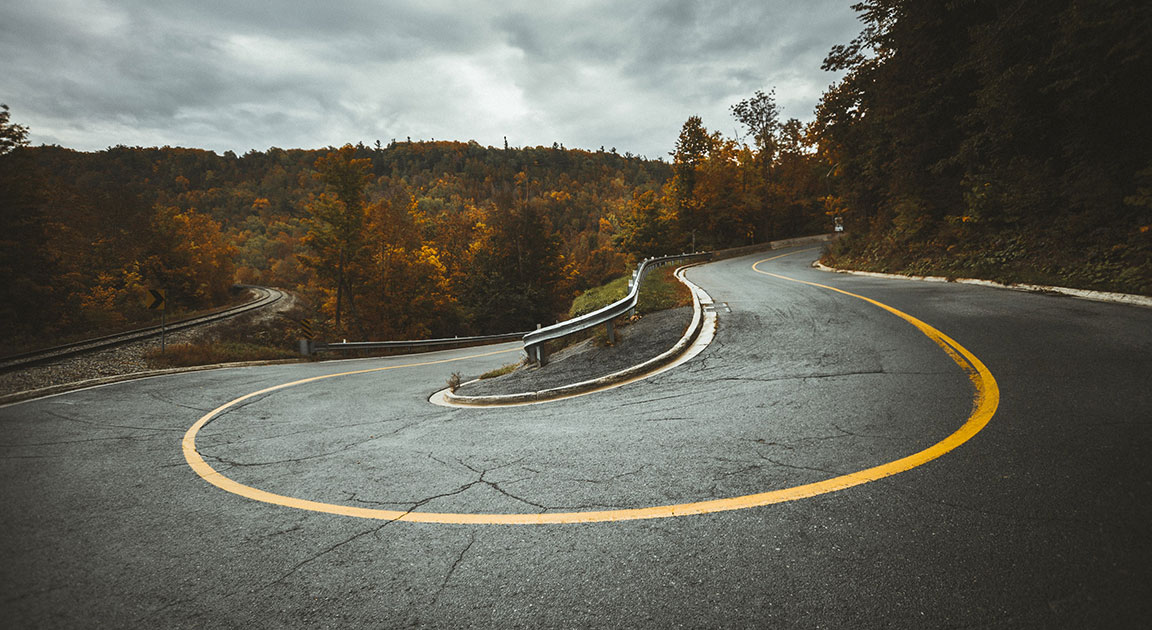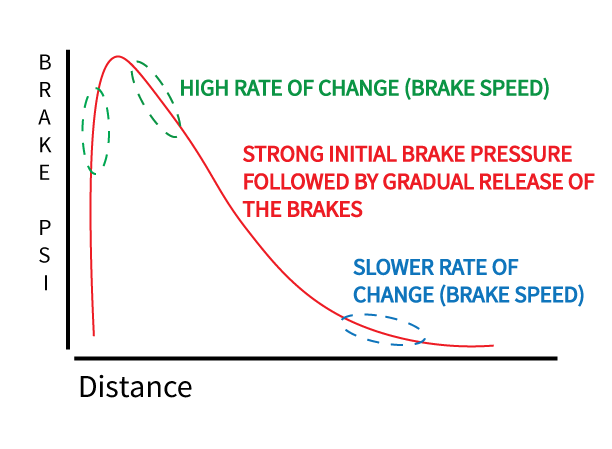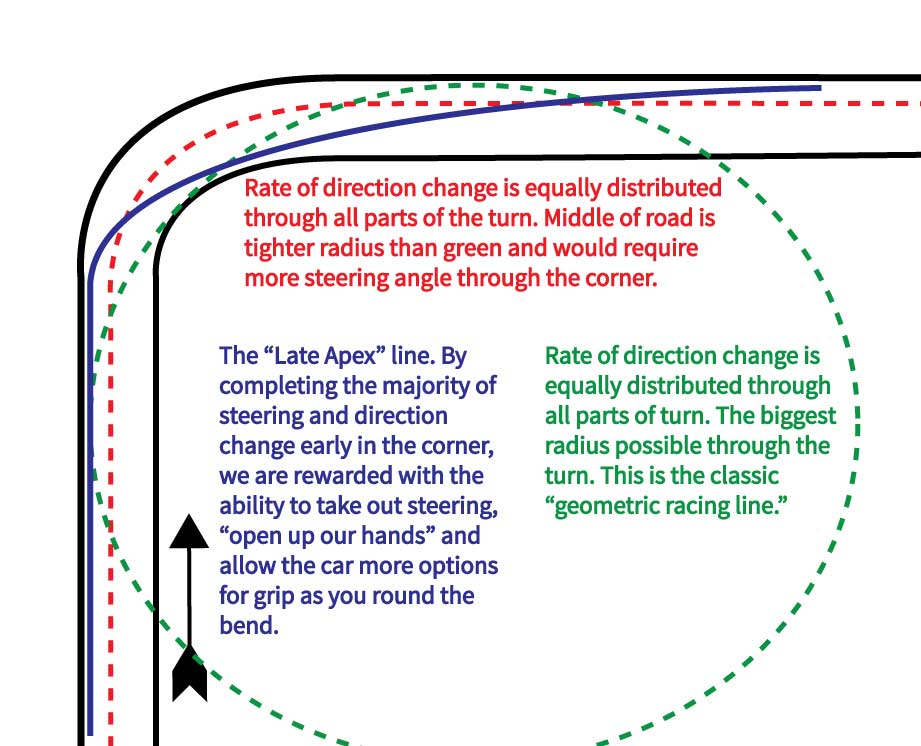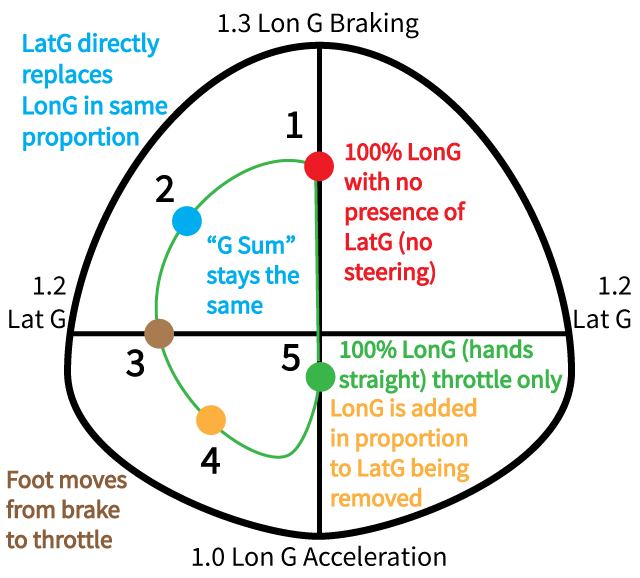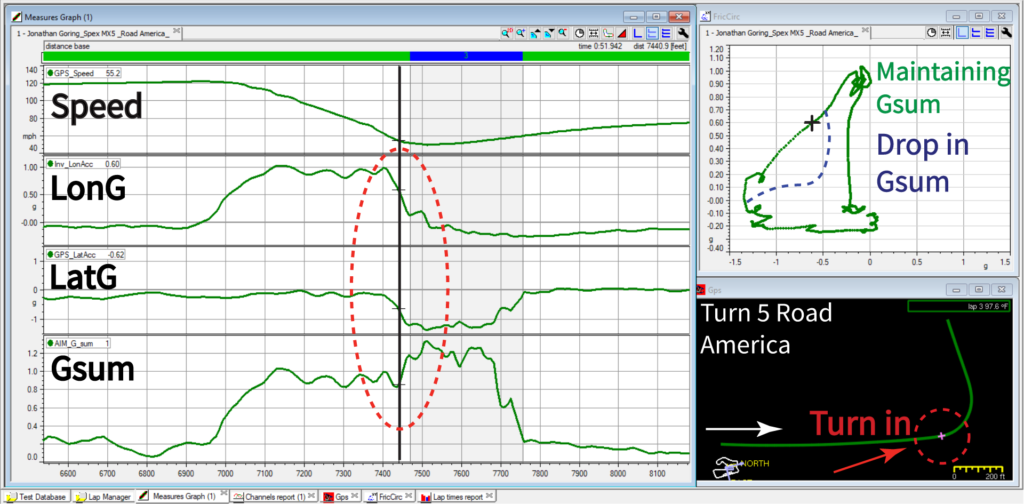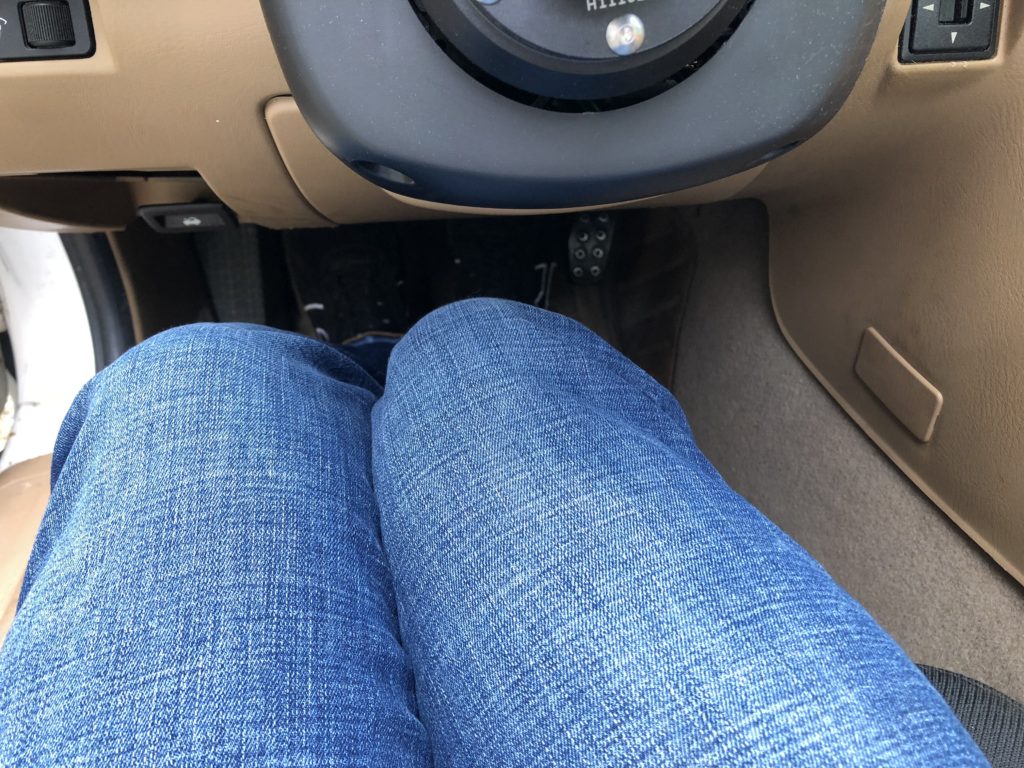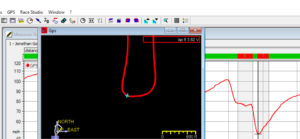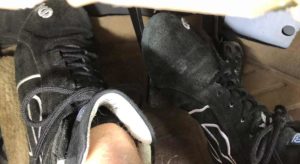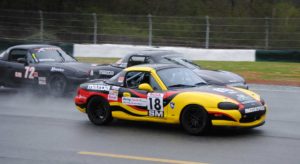Want to know a little secret?
Those seemingly subtle details in your street driving just may make the difference between saving the skid and not for when you’ve “sent it” a little too hard out on track.
Here’s the thing. Whether our street driving habits are good or bad, they engrave themselves into our driving subconscious over time. We drive on the street almost daily, so why not make that time behind the wheel productive to become a better track driver?
6 Performance Driving Concepts & Techniques that can be used in your street driving:
I’ve put together a list of what I find to be the 6 most important skill sets you can practice out on the street while still obeying every letter of every law.
You don’t need to speed, drive over the yellow line or corner “on the door handles” to practice good performance driving form!
#1: Eye-work
“Where you look is where you go” is the saying. Problem is, 99% of drivers (best estimate IMO) look at the car in front of them when following another car. When you do this, you make the switch subconsciously from driving your own car independently to just following someone else’s.
This is a huge distinction.
Eyework is the most fundamental concept in performance driving.
Don’t be a sheep! Look anywhere else but the bumper of the car in front of you.
The focal point of your eyes should always be on your intended path, but simultaneously your thought process should be on your peripheral.
I find that this methodology gives me the best awareness of other cars around me and possible escape routes should something happen.
It’s important to note that the ability to see in your mirror using only your peripheral vision is a big determinant between a driver who’s aware out on track versus one that isn’t.
Do you look out the windshield when you accelerate? Well why wouldn’t you then *at least* check your mirror as you decelerate?
This is the kind of awareness that needs to be practiced on the street so that it is a subconscious act out on the track.
#2: Brake Pressure Modulation
This graph is all you need to know when it comes to learning how you should be braking regardless whether you’re out on the public roads or out on the race track.
Let’s go through it:
The X axis is distance travelled and the Y axis is how hard the brakes are being pressed.
Whether it’s in the context of a “9 pedal” (9/10s braking %) or a “2 pedal” (2/10 braking %) the shape of your brake trace in your brake zones should look like this for 99% of corners that you brake for.
In a typical, well driven brake zone, both brake speed and brake pressure rise strongly initially, with peak pressure easing almost instantaneously but at a slower and slower “rate of change” (brake speed) as the brake zone goes on.
Most of your brake zones on the street will be less than a 5/10 brake pressure no doubt, but that just means you have to work that much harder to be accurate because you’re working in a smaller window of modulation.
If you can get your brake trace shape to look like this consistently especially at the lighter brake pressures than you are a racing god!
This can all be practiced out on the street while still legally following the rules of the road.
#3: Finishing The Turn Sooner
Let’s get all that direction change over and done with as soon as possible in the corner, so that we can enjoy the benefit of taking steering out early in the corner and therefore allow grip potential for all the tires should we need it.
…Say what?
It helps to think of your tire traction like a budget. You have 100% of your budget that you can distribute the grip in any amount to different tasks (accelerating, braking or turning) but it can’t add up to more than 100% in total.
By taking the blue line, we arrive at the “Apex” (inside clipping point of the turn) with less steering input than we would have on any other line. Since we are steering less, This allows us the most traction budget (and options in general) for emergency braking or swerving should something start to go wrong through the turn and you need to take evasive action to avoid.
Working well within the yellow and white lines on the road you can stay in your lane and safely practice this technique for all turns.
Line selection practice on the street is great because it forces your brain to calculate the line through any given corner sequence.
When negotiating turns and working on finding the line, remember to ask yourself “what is line with the least overall steering input?“
#4: Maintaining “Gsum” on all points in the corner
To master the complex variables of “trail braking,” (the release of brake pressure with any lateral load) I would make a good argument that it could be considered the “holy grail” of track driver performance.
Any experienced track driver at least knows that the release of the brakes with steering will play a critical role in how the car will handle through the entry, mid corner and even exit of any turn.
Let me introduce you to “Friction Circles” first and then the concept of “Gsum.”
A “Friction Circle” is just a visual illustration of some very basic physics you already surely understand. Where does your coffee go when you slam on the brakes? Forward. When you floor it? Backward.
Here’s a more visual example. Tie a string around your rear-view mirror and attach a small weight at the bottom that dangles down from the mirror about 4 inches. If a professional race car driver drove as fast as they could around a race track, the weight would get tossed around in all different directions. The outermost ends that the weight reached would define the outer edges of the Friction Circle.
From an aerial it would look something like this:
A Friction Circle is typically scaled as “G force.”
In racing, if a pro driver spent a lot of time at the outer edges of the Friction Circle, they are doing a great job of consistently using the grip of the car to the absolute maximum.
But what if the goal wasn’t to use 100% grip of the tire, but instead to always use exactly 50%?
We’d want to get a smooth, quick load transfer up to 50% from longitudinal braking exclusively, transition into lateral by cornering and then back to longitudinal with the throttle all while keeping our total Gs the same.
On the public roads, we both can’t and don’t want to be anywhere near the outer limits of the friction circle.
But we CAN practice this load transfer coordination by only using 50% or less of the tire’s grip, whatever is safe and lawful in the given scenario.
Referencing that weight that’s dangling from the string around your rear view mirror again, this is the line that it would trace if you did what I just described correctly: (Identified below in 5 stages)
In this circumstance, we have selected to use 50% of our traction budget in total so that we can follow the rules of the road.
Obviously on the track we are looking for 100%, but that doesn’t mean we can’t just pretend the number is 50% and practice.
The technique is still the same.
Phase 1: Driver initially hits the brakes and reaches the highest brake pressure that will be achieved in the brake zone (50%) and maintains a straight steering wheel.
Phase 2: Driver has eased up on the brake 25%, budgeting for 25% cornering grip. LatG (turning) and LonG (Decelerating) are evenly distributed and total grip used is 50%.
Phase 3: Driver has released brake completely and is in the process of moving foot from brake to throttle pedal. Maximum steering angle is in the car. Car is only experiencing 50% LatG only and no LonG. This means that the car is neither accelerating or decelerating.
Phase 4: Driver is beginning to unwind steering and has taken 25% LatG out of the car budgeting 25% LonG traction for the throttle squeeze out of the turn. Total grip being used again totals 50%.
Phase 5: Driver has their hands completely straight and there is no LatG present. 50% traction is being used for acceleration. Remember, since were on the street and following local laws, don’t expect to stay on the throttle very long.
Using the weight dangling from the mirror analogy again, if the weight on the string returned closer to center (as opposed to staying around the outside) the driver would have had a moment in time where they weren’t consistently using 50% of the tires ability.
If a driver did this incorrectly they would have had a drop in “Gsum.”
What exactly is Gsum?
Mathematically, it’s “sqrt((LatG^2)+( LonG^2))”
If you’ve never seen actual data from a race car on a race track, here you go. This is me driving at Road America at Turn 5 in an MX5 Cup car.
In the upper right-hand corner, we have a real-life example of a friction circle using an AiM MXL2 data acquisition system.
You can see how I am giving up LonG in exact proportion to how much I am adding LatG. We can tell this because the green line is a near perfect 45 degree descent (marked by X.)
The blue dotted line and would be incorrect because the driver would have eased up on the brakes too much before they started turning. They could have “leaned” into the tire a little harder on brake release.
You also see a line graph with 4 channels plotted up the Y axis. We have Speed, LonG, LatG and finally Gsum. These are displayed over the X axis which is simply distance travelled.
Both sets of data tell the same story. I am adding lateral G by adding steering in exact proportion to how I am coming off the brake and removing the longitudinal force.
As a result, the Gsum channel stays elevated as I come off the brake.
In fact, Gsum goes higher in this example because this car on these tires is capable of producing more cornering force than it is braking force.
You can then use what we learned at a tire budget of 50% and use the same techniques at 100% once you’re out on track again.
#5: Seating Position & Core Engagement
If you want to be a physically fit performance driver, you MUST have a strong core!
Whether it be in a performance environment or out on the public roads, keeping your abs & obliques tight and engaged is crucial for optimum muscle control and therefore driver performance. Very similar to playing an instrument as a musician, your muscle control needs to be dialed in and that all starts with a strong core.
With weak, inactive core muscles you will be “hanging” off the steering wheel by supporting your weight against it.
Furthermore with the pedals, if you melt into the seat too much you’ll end up using your leg muscles instead of your ankle muscles for pedal modulation. No good!
Frankly, if you aren’t tight in the core, you don’t stand a chance at ever developing that “seat of the pants” feel.
Practice staying tight, upright and not melting into your seat with an inactive core.
You should be able to keep a neutral spine working through all possible ranges of motion that you will have in the car (full throttle, full clutch, no clutch, etc.)
If you can’t, you need to rethink your seating position.
#6: “Knee in” Technique
Quick and easy tip.
Any time you go to the brakes, draw your right knee over to the left against your left knee.
Your heel should also sink “underneath” the brake pedal (not in front of it) and your foot should Dorsiflex (toes towards knees so ankle points up.) This will put the pedal on the ball of your foot and give you better ankle control over the brake pedal, forcing you to use the fine motor skills in your ankle as opposed to the big, clunky leg muscles.
It will also put you in the ideal position for a “Heel/Toe Downshift.”
Conclusion
Thank you for reading another one of my articles and I hope you enjoyed. I plan to do more of these with the season winding down.
As always if you have any questions or anything on this article please reach out.
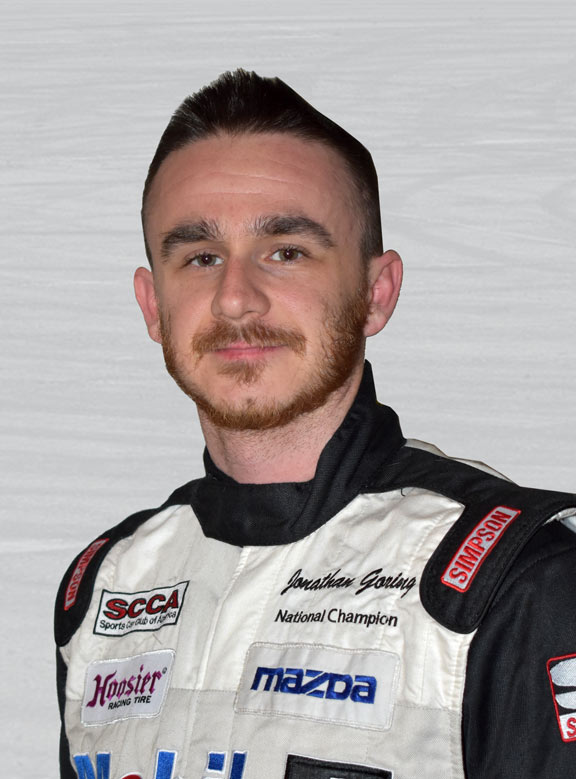
ABOUT THE AUTHOR
JONATHAN GORING
From 2006 Skip Barber National Champion to 2015 Spec Miata SCCA Runoffs Champion, and with the 2008 IMSA Lites title in between, I’ve been in the racing scene for quite some time. I’ve been fortunate to race against (and beat sometimes) the best drivers in the world currently racing in various top level motorsports.
I’m very passionate about the art/science of performance driving and want to share that passion with you.
WANT TO DRIVE FASTER THAN EVER?
Join my email list for monthly articles, driving tips, exclusive announcements on new things I’m working on and wisdom delivered straight to your inbox! You can unsubscribe at any time.

